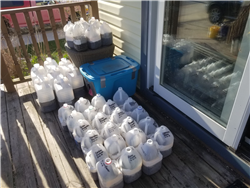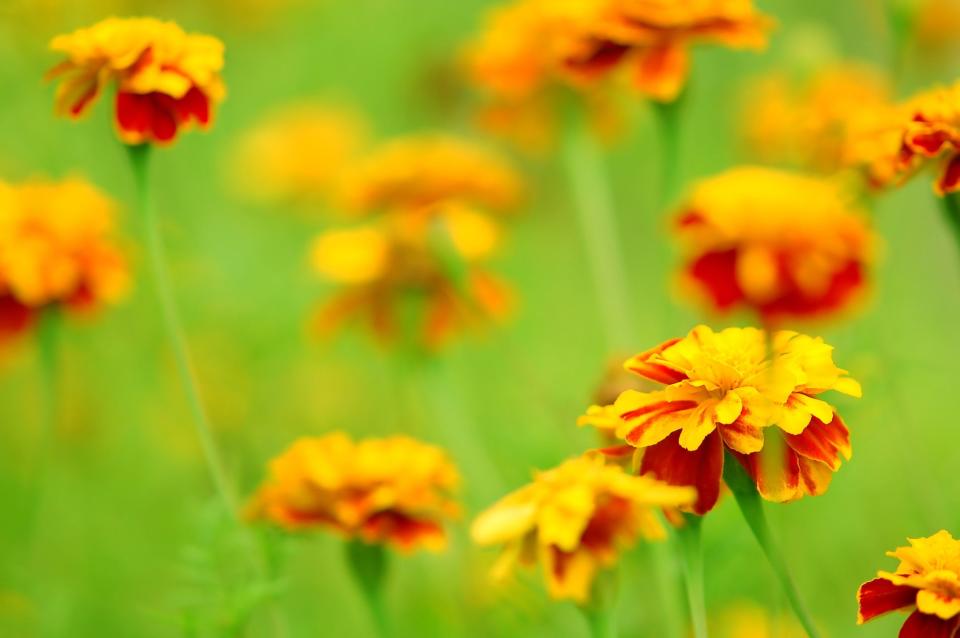Garden: Planting seeds in winter? Sure, several crops can be winter sown

Many gardeners start flower, vegetable and herb seeds indoors during winter months in order to have seedlings to plant outdoors after the last spring frost occurs, typically around the last week in April in Greater Columbus.
Starting seeds indoors takes time, requires significant space and constant attention to production details such as light intensity, soil temperature and ventilation. And before the resulting seedlings can be planted outside in spring, they must be gradually hardened off, a process that slows the plant’s growth in order to allow it to adjust to the change in environmental conditions when planted outdoors.
Although it is too early to start seeds of warm-season vegetables and annual flowers indoors, a process called winter sowing can provide eager gardeners an opportunity to get a jump on planting seeds of certain vegetables, herbs and flowers outdoors in January, especially if you lack enough space indoors to start all of the plants you wish to grow.
All about winter sowing
Winter sowing is a propagation method used throughout the winter where temperate climate seeds are sown into protective vented containers and placed outdoors to foster a naturally timed, high percentage germination of climate-tolerant seedlings. Winter sowing is different from winter seeding, which refers to techniques including frost- and snow-seeding that are typically done on a larger scale for wildflower meadows and pastures.

Winter sowing consists of creating a tiny greenhouse or cloche out of transparent plastic containers such as gallon milk jugs or 2-liter pop bottles. Certain take-out food containers with clear lids can also be used. Just like in a larger greenhouse, the transparent containers capture solar energy that warms the soil or medium in the containers earlier than exposed soil in the spring.
The cold winter weather stratifies (stimulates) the seeds and prompts germination when soil and air temperature is ideal. Many native perennials require stratification, a process that uses temperature and moisture to soften the seed coat and break seed dormancy. Winter sowing is an easy technique and results in healthy, strong seedlings.

What crops can you winter sow?
Winter sowing works best for plants that are cold tolerant or even require a period of cold in order to germinate. When you are looking at seed descriptions online or in seed catalogs, look for descriptions such as “cold tolerant”, “cool season”, “hardy annual,” “perennial”, “sow in autumn”, “sow in early spring” or “self-sows”. These descriptions indicate the best candidates for winter sowing.
Cool-season flowering annuals that can be winter sown include delphiniums, snapdragons, bachelor buttons, poppies, cosmos, zinnia, marigold and Canterbury bells. Most cool-season vegetable crops can be winter sown, including: spinach, kale, lettuces and greens, beets, cabbage, broccoli, Brussels sprouts, leeks and kohlrabi. Herbs such as thyme, salvia, oregano, cilantro and parsley can all be winter sown as well.
Winter sowing is not a good method to use with heat-loving crops such as tomatoes, peppers, squash and basil. Seeds for these crops should be started indoors later this winter, about six to eight weeks before the average date of the last spring frost.
How do you get started?
Begin by poking drainage holes in the bottom of the container using a pointed screwdriver, knife or scratch awl. To do this, turn the jug over, bottom side up, and poke five or six holes in the bottom of the container. Ventilation holes on the "shoulders" of the jug will not be needed as long as the cap is not placed back on the top of the jug or bottle. Then use scissors or a utility knife to make a cut about four inches up from the bottom of the container and cut horizontally almost the whole way around the jug, leaving a ‘hinge’ at the back. The hinge allows you to open and shut the jug.
More: Gardening: Seed catalogs, websites can help growers plan ahead
Add three to four inches of moist seeding or potting mix to the bottom of the container. Plant the seeds at the depth recommended on the seed packet. Germination rates vary among plant species, so sowing more seeds than you need can help ensure you get the amount of plants you want. Be sure to label each jug with the crop and variety. Seal the top and bottom halves of the jug together with duct tape.
Placing the containers outdoors
Once planted, place the jugs or containers in a sheltered location that receives full sun. Patios and decks make good locations for containers. Choose a location where the wind will not blow the containers over. Do not be alarmed if the containers become covered with snow or ice as these provide excellent insulation. Containers can also be placed in a cold frame or under a plastic row cover to speed warming of the soil and ambient temperature and seedling growth.
Mike Hogan is an Extension Educator, Agriculture and Natural Resources and associate professor with Ohio State University Extension. hogan.1@osu.edu.
This article originally appeared on The Columbus Dispatch: Garden: What seeds can be winter sown? You might be surprised

